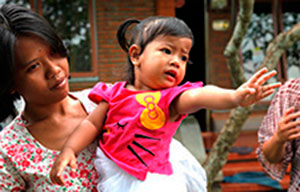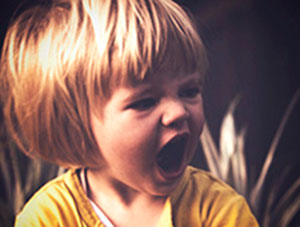Session 10/15
Page 3/7: Topic A: The lack of a secure base group when placed outside homeTopic A: The lack of a secure base when placed outside home
Why is today’s focus important?
Sometimes, children and youth in foster care have not only experienced separation from parents. Many have also experienced other losses and separations prior to meeting you. Maybe they have been placed in several foster families, lived with relatives, or in children’s homes where caregivers have been frequently replaced. They may also have experienced many conflicts between parents such as a divorce, fights over custody, etc.
When children lack a secure and long-term caregiver relation, they react by developing insecure attachment behaviours (see session 9). When entering the foster family, they may show aggressive, withdrawn or indiscriminate attachment in daily interactions. It can be difficult for them to understand what to say or do, and how to behave towards others in the family. This can be a very disturbing experience for all family members, also for the child who can feel rejected when it is unable to understand and practice the social codes for behaviour within the family.
Therefore, it requires flexibility and careful dialogue and planning within the foster family to cope with these problems in order to find new ways to make the social relations work and make the child feel that it belongs and is connected. Thereby, you let the child become able to learn gradually how to manage daily interactions. Often, it takes a major and patient effort until practices for roles and boundaries works for all members of the family, including the foster family’s own children.
But even children who come from difficult backgrounds can learn this if they receive patience, support and understanding care from foster parents and professionals.


WHAT IS THE CHALLENGE FOR CHILDREN IN CARE AND WHAT WORKS WHEN TRYING TO HELP THEM?

In studies of young people who have been brought up in institutions and/or foster families, they frequently describe feelings of low self-esteem, rejection, and homelessness. Also, they have experienced that very few people in the system have talked to them about what really mattered: their need to belong. In studies of young homeless, most of them grew up in institutional or foster care. This sad development can in many cases be prevented in the foster family by working to make the child feel included and build up its social competences.
Former Danish Prime Minister Anker Jørgensen’s parents died when he was five. In his recommendation of Fairstart, he stated that his success in politics was due to the care from his aunt who became his foster mother. Also that the children’s home where he grew up later on had a strong social profile. This gave him the urge to take social responsibility, and find the courage necessary for making his career.
People who grew up in alternative placements and who have been successful in adulthood all describe four characteristics of their childhood caregivers:
• One or two caregivers had taken an interest in their life and allowed them to form an attachment to them. These individuals were tolerant and gave them time to develop slowly.
• They experienced being given a personal space of their own.
• They lived in a group (foster family or institution) where they learned the social skills that they hadn’t learned from their biological family.
• The group had good relations with the local network, making the child feel accepted in society.
